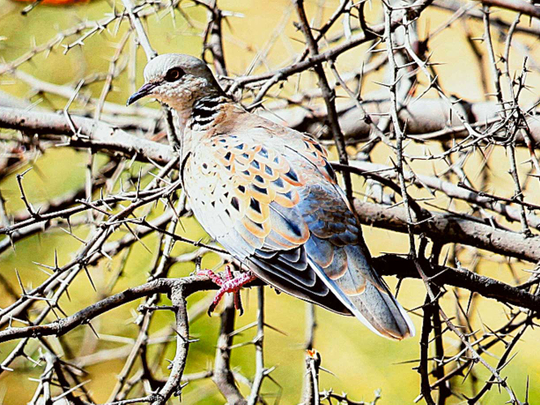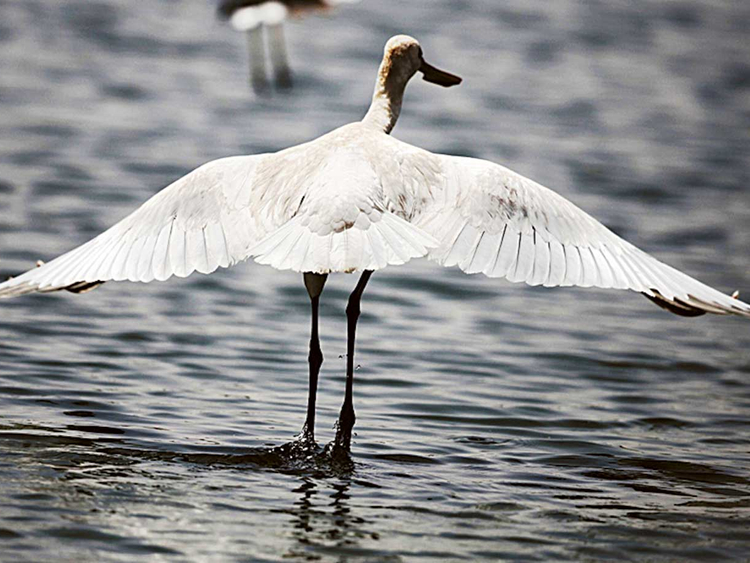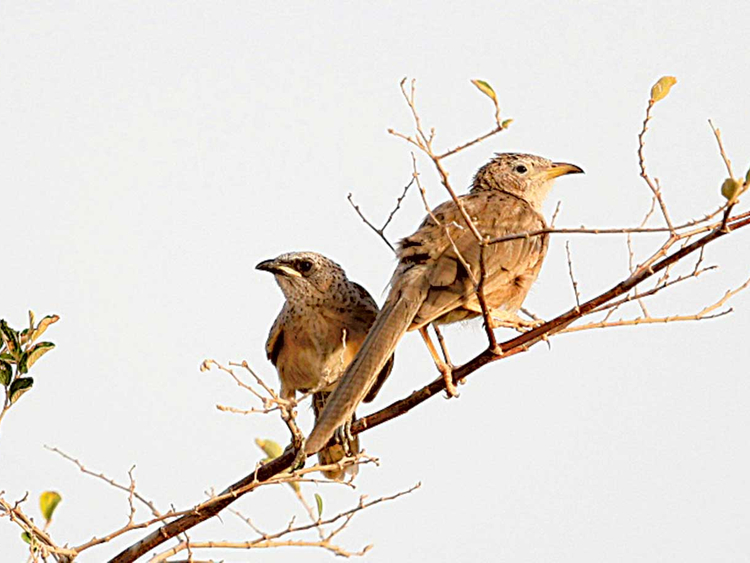
Dubai: Nestled in the middle of the desert, Dubai’s Al Qudra Lake is now home to as many as 175 species of birds, including some endangered and threatened ones, Dubai Municipality revealed on Thursday.
The recording of the number of bird species in the lake in Bab Al Shams desert area was carried out by wildlife specialist Dr Reza Khan and his team from 2008 till August this year.
Currently, the principal wildlife specialist with Dubai Safari, Dr Khan said it is the highest number of birds recorded so far from this lake and its environs. Extending up to a three-kilometre radius, the stretch also includes several man-made oases created by the Engineer’s Office of His Highness Shaikh Mohammad Bin Rashid Al Maktoum, Vice-President and Prime Minister of the UAE and Ruler of Dubai, and a few small plots of natural reserves.
|
|
Clamorous Reed Warbler |
“The team has sighted 171 species, and four species of birds have been recorded from the lake area by other birdwatchers that have been posted on www.uaebirding.com — a website where almost all bird sightings in the UAE are reported by various birders in the UAE and abroad. So far, 204 species have been noted from the whole of Bab Al Shams and Saih Al Salam desert area by all birders in the UAE,” Dr Khan said in a press release.
In addition to 171 species of birds, Dr Khan and his team also noted 73 species of plants, 26 species of reptiles and 12 species of mammals. The number of species of insects and other invertebrates are yet to be assessed.
Of the birds, the Lappet-faced Vulture and Steppe Eagle are endangered species as per the Red List of the IUCN (International Union for Conservation of Nature). Asian Houbara, Marbled Teal, Greater Spotted Eagle and Eastern Imperial Eagle come under the Vulnerable list whereas Pallid Harrier, Curlew Sandpiper, Black-tailed Godwit and Bar-tailed Godwit are in the Near-Threatened list.
The IUCN wants all species under the Red List categories of Critically Endangered, Endangered and Vulnerable birds to be considered under the conservation-dependent category of threatened species that have the highest chances of extinction risk. IUCN expects countries having such species to provide proper protection and give management support so that their conservation status does not go down further.
Shaikh Mohammad had given directives to reintroduce and manage the Houbara populations, that come under the ten Threatened and Near-Threatened species found here, in certain parts of the Bab Al Shams desert.
“It is heartening to note that Houbara is now successfully breeding in the protected areas within Bab Al Shams and a few of them occasionally visit the Al Qudra Lake environs. The remaining 165 species of birds fall under the IUCN broad category of Least Concern,” said Dr Khan.
Of the 12 species of mammals, most notable are the Arabian Oryx that has started breeding in the area for a decade now. On the other hand, over 100 Arabian Mountain Gazelles and nearly 50 Reem or Sand Gazelles visit the lake area for food, water and shelter. Notable among the reptiles are the Wurral or Desert Monitor, a few lizards, snakes and skinks, the wildlife specialist pointed out.
Endangered species
Lappet-faced Vulture and Steppe Eagle
Vulnerable species
Asian Houbara, Marbled Teal, Greater Spotted Eagle and Eastern Imperial Eagle
Near-Threatened
Pallid Harrier, Curlew Sandpiper, Black-tailed Godwit and Bar-tailed Godwit














